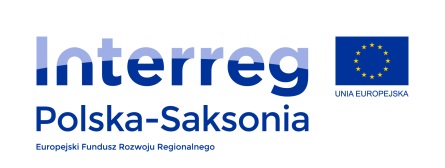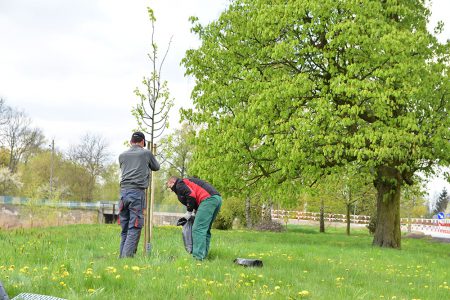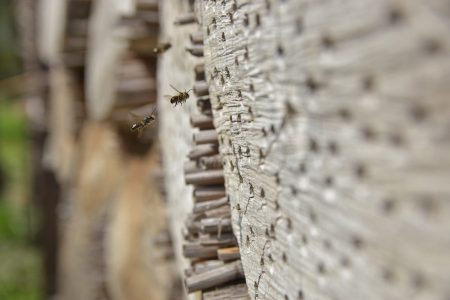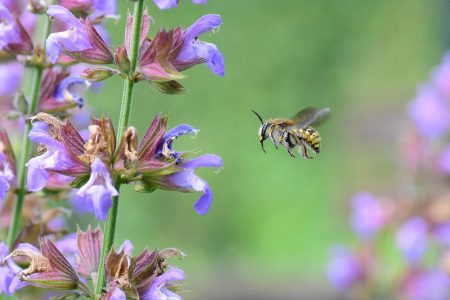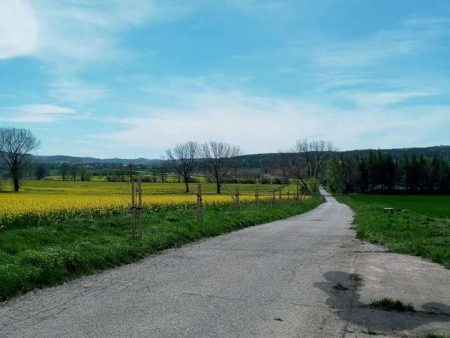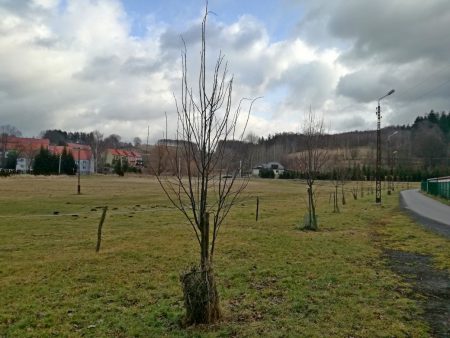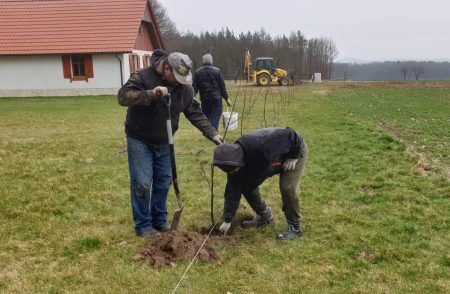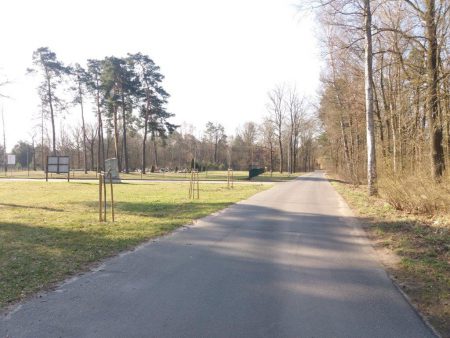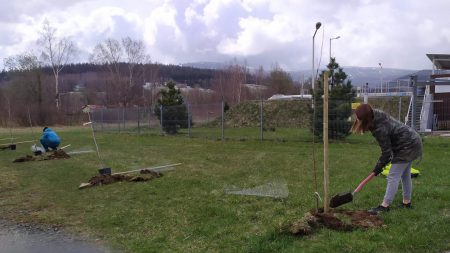Dla pszczół – transgraniczna współpraca na rzecz zachowania siedlisk pszczół i dzikich owadów zapylających
Pszczoły i inne owady zapylające od lat walczą o przeżycie. W Europie żyje prawie 2 tys. gatunków dzikich pszczół, z czego 9,2 proc. grozi wyginięcie, a dalsze 5,2 proc. będzie nim zagrożone w najbliższych latach. Od ich losu zależy także życie człowieka: praca tych owadów jest kluczowa dla światowej produkcji żywności i zachowania bioróżnorodności.
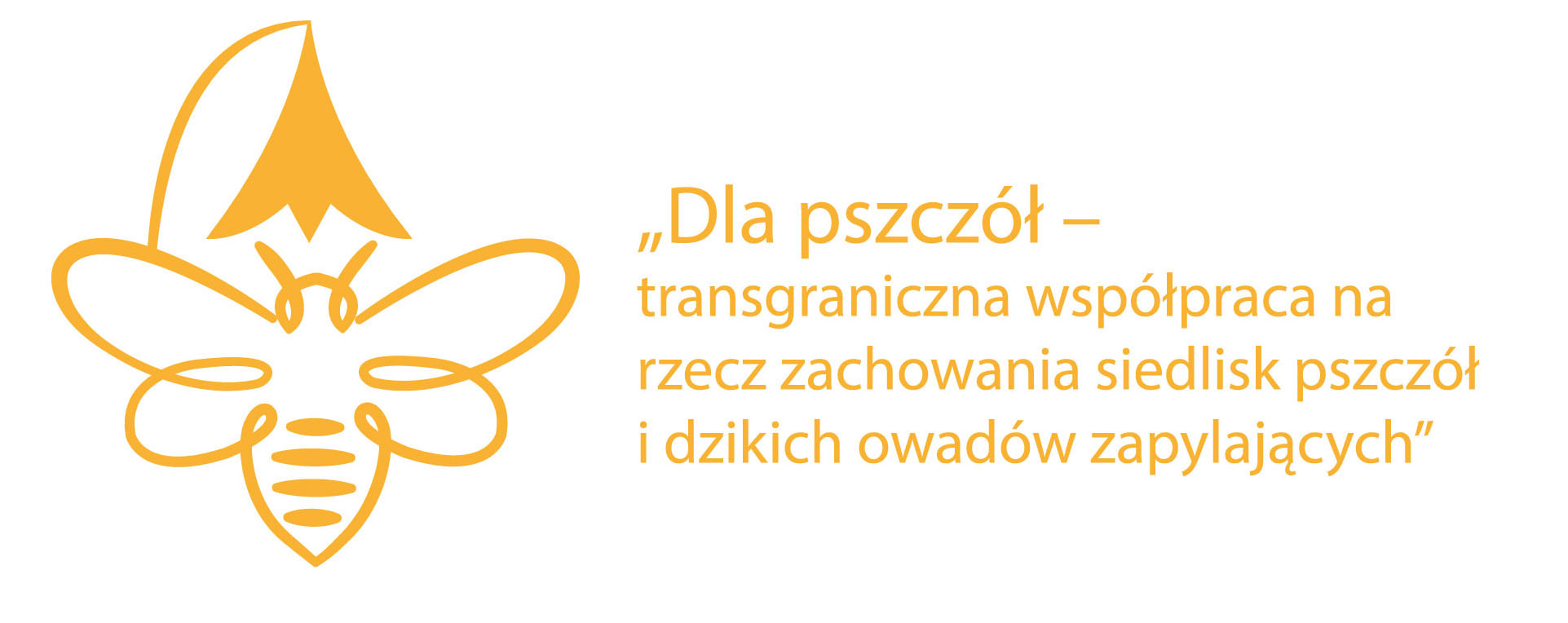
O projekcie
Projekt „Dla pszczół – transgraniczna współpraca na rzecz zachowania siedlisk pszczół i dzikich owadów zapylających” to odpowiedź na zdiagnozowane problemy w zakresie ochrony zapylaczy, czyli podejmowanie konkretnych działań w środowisku przyrodniczym na rzecz tworzenia, zachowania i pielęgnacji ich siedlisk, w tym:
- nawiązanie współpracy między instytucjami na pograniczu polsko-niemieckim przy wspólnym działaniu na rzecz środowiska: odtworzeniu i pielęgnacji siedlisk dla owadów zapylających – sadów, łąk, stref nektarodajnych i miejsc rozrodu owadów,
- wzrost świadomości mieszkańców pogranicza w zakresie współczesnych zagrożeń i przyczyn znacznego ograniczenia populacji owadów zapylających i sposobów przeciwdziałania temu zjawisku, które mogą podjąć mieszkańcy, pszczelarze i samorządy lokalne,
- wykorzystanie naukowej wiedzy poprzez wdrożenie zaleceń do działań na rzecz zachowania siedlisk owadów zapylających oraz wizyty w pokazowych pasiekach.
Do zakładanych rezultatów działań realizowanych w projekcie należą m.in.:
- utworzenie 9 stref miododajnych ( 4 łąki w Niemczech i 500 drzew w 5 lokalizacjach w Polsce),
- pielęgnacja 4 tradycyjnych sadów oraz nasadzenia drzew owocowych (100 w Niemczech i 100 w Polsce),
- opracowanie 2 wzorców w zakresie ochrony przyrody i przyjaznej dla owadów pielęgnacji tradycyjnych sadów, a także opracowanie rekomendacji dotyczących zachowania siedlisk i pożytków poprzez odtwarzanie zadrzewień.
Przeprowadzone działania z wybranymi gminami
Wspólnie z gminami Lwówek Śląski, Leśna, Osiecznica, Świeradów Zdrój i Bolków założyliśmy pięć miejsc pożytkowych. W każdej z gmin posadzonych zostało po 100 drzew, głównie owocowych, a także lip. Powstały hotele dla owadów i tablice edukacyjne, po jednym komplecie w każdej gminie. Miejsca ustawienia hoteli dla owadów zostały uzgodnione, w taki sposób, aby jak najbardziej służyły owadom zapylającym.
Poza tym, w sposób przyjazny dla owadów wypielęgnowane zostały 2 aleje śródpolne w gminie Męcinka, wraz z nasadzeniem uzupełniającym.
Podjęte zostały działania, które gwarantują, że także po zakończeniu projektu warunki dla dzikich pszczół i owadów nadal będą dobre. W tym celu niezbędne było zrealizowanie spotkań i wydanie materiałów edukacyjnych aktywizujących ludzi do działania na rzecz dzikich pszczół i innych owadów.
Odbiorcami tych działań byli pracownicy gmin uczestniczących w projekcie oraz zainteresowani mieszkańcy.
Na koniec projektu, wspólnie z naukowcami przygotowano obszerne rekomendacje dotyczące zagospodarowania powierzchni zielonych w sposób przyjazny dla zapylaczy.
Zaproszenie dla samorządów
Zapraszamy samorządy do zgłaszania miejsc nasadzeń na terenie dróg śródpolnych, dróg gminnych, nasadzeń liniowych i punktowych na terenach publicznych miejscowości, które mogą zostać sfinansowanie z projektu.
Kontakt
tel.: 76 86 294 30
Więcej informacji na http://www.pszczoly.zielonaakcja.pl/aktualnosci.html
Finansowanie
Projekt „Dla pszczół – transgraniczna współpraca na rzecz zachowania siedlisk pszczół i dzikich owadów zapylających” jest międzynarodową, transgraniczną inicjatywą na pograniczu polsko-niemieckim, dofinansowaną ze środków Interreg Polska-Saksonia.
Projekt realizowany jest w partnerstwie czterech organizacji – dwóch organizacji z Polski Fundacja EkoRozwoju (partner wiodący – http://new.eko.wroc.pl/2019/09/25/dla-pszczol/#more-427), Fundacja Ekologiczna „Zielona Akcja” (www.pszczoly.zielonaakcja.pl) oraz dwóch organizacji z Niemiec: Internationales Begegnungszentrum St. Marienthal – IBZ oraz Lebens(T)räume e.V.

Fundusz Budżet projektu: 375 090,94 EUR
Źródła finansowania:
318 827,27 EUR (85%), Interreg Polska-Saksonia
